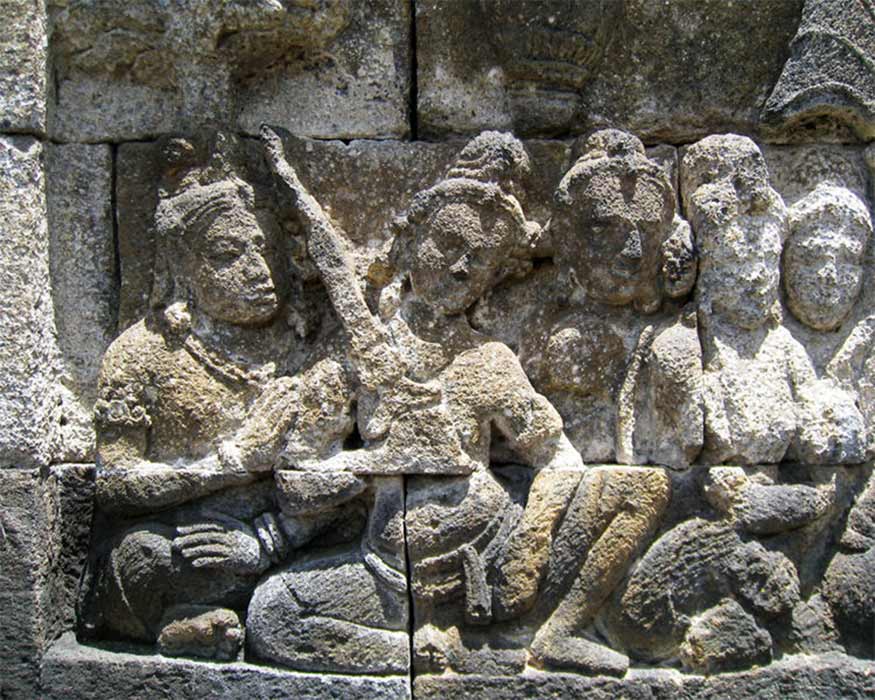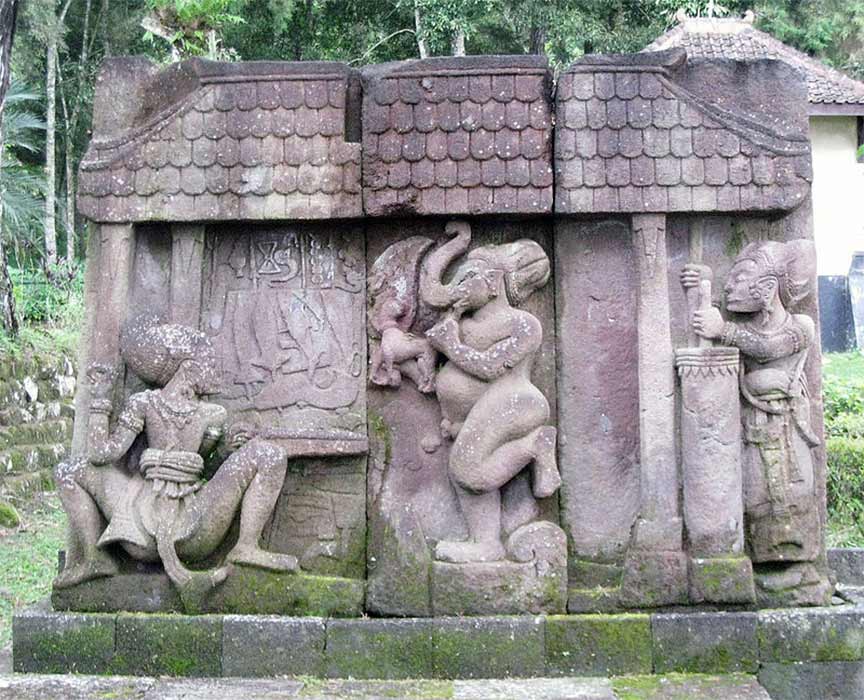
The Indonesian Keris Dagger Forged From Metal, Imbued With Spirit
In 2005, the Southeast Asian dagger, keris, was designated as a Masterpiece of Humanity's Oral and Intangible Heritage by UNESCO. The keris is an asymmetrical dagger with a unique blade design made possible by alternating iron and pamor (nickelous iron laminations). A keris has various practical and spiritual purposes. It may be used for display, magical talismans, weapons, a sanctified pusaka (heirloom), auxiliary weapon for court soldiers, accessory for ceremonial dress, indicator of social status, a symbol of heroism, and many more. The Barong Dance of Bali highlights the dangerous and mystical qualities of keris when the villain Rangda tries to magically enchant the prince's soldiers to commit suicide while another magician makes them invincible to sharp objects. In a trance state, the male dancers stab themselves in the chest with their own keris but remain unhurt.

Barong dance performance with kris-wielding dancers and Rangda in Bali. (Tropenmuseum / CC BY-SA 3.0)
History Of Keris
The history of keris is generally traced through the study of carvings and bas-relief panels discovered on the Indonesian island of Java. Some of the most famous depictions of a kris can be found on the bas-reliefs of the Borobudur temple (825 AD) and the Prambanan temple (850 AD) in Central Java. The Humanding inscription (875 AD), Jurungan inscription and Haliwangbang inscription (876 AD), Taji inscription (901 AD), Poh inscription (905 AD), and Rukam inscription (907 AD) all mention the word keris.

A bas-relief on the wall of Borobudur of a man holding a medium sized keris. (Gunawan Kartapranata/ CC BY-SA 3.0)
Keris has been made in a variety of styles throughout history. The kind of keris used by the royal guards and warriors were more like swords, cradled in the left arm, many with straight practical blades that were light in both weight and design. However, there is also a shorter and more ornamental keris designed specifically for female royalty. A Sundanese manuscript, the Sanghyang Siksa Kandang Karesian, a didactic text of religious and moral lessons dated in 1518 AD, describes the keris as a king's weapon, while the kujang, a native Sundanese weapon from around the eighth century AD, is a farmer's weapon.
The keris as it is known today may have originated around 1361 AD in the kingdom of Majapahit, East Java. A clue of what a workshop of a Javanese keris blacksmith might have looked like at the time is depicted in the bas relief of the Candi Sukuh, a temple in Central Java, which dates from the 15th century Majapahit era. The characters depicted in this relief, however, are decidedly mythological. Bhima was the blacksmith on the left, forging the metal, Ganesha was in the center, and Arjuna was on the right, operating the piston bellows to blow air into the furnace. The wall behind the blacksmith displays various forge-made items, including keris. These representations of the keris in the Candi Sukuh established that the keris had already gained prominence in Javanese culture by 1437.

Kris blacksmith's workshop depicted in 15th century Candi Sukuh. (Gunawan Kartapranata/ CC BY-SA 3.0)




